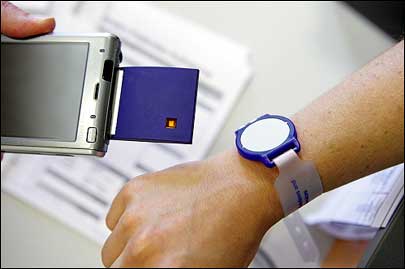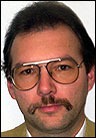A hospital in Saarbrücken, Germany, is using radio frequency technology to track bags of blood to record transfusions and ensure that patients get blood intended specifically for them. The project, which is being deployed by a consortium of companies including consulting and systems integrator Siemens Business Services (SBS), is in an initial test phase in the internal medicine division of Saarbrücken Clinic Winterberg. The system will be extended to blood bank supplies for about 1,000 patients, and works together with another SBS-implemented system to identify patients via RFID-based wristbands.
In the initial test phase, about 1,000 bags of blood are being labeled, and all steps—from assigning each bag to a patient to the start of a blood transfusion—are being tracked and recorded. Before the system was implemented, bags of blood were tracked with bar codes and human-readable text.
This RFID solution adds significant security so the hospital can make sure the correct blood product is given to each patient, maintains Thomas Jell, SBS’ project manager for both the blood and patient RFID systems. Additionally, he says, the overall process of managing blood bags is eased and less time-consuming.
“This is the first project worldwide to really identify blood bags and patients, and automatically double-check that both fit together,” says Jell. “The system automatically transfers information about transfusions into the database for the blood bank and into the billing system.”
With the new blood-tracking system, hospital workers attach a self-adhesive 1.5-by-1-inch RFID label to each bag of blood arriving at the hospital. The label’s passive 13.56 MHz RFID chip has 2 kilobytes of memory for storing a unique identification number, the hospital tracking number (used by the blood bank system) and information on blood type.
These numbers are also saved in a secure database containing details about the blood’s origin, its designated purpose and, once dispensed, its recipient. When a nurse wants to prepare a blood transfusion, he or she uses a handheld computer with an RFID interrogator to read the data encoded on the blood bag’s RFID chip and the inlay embedded in the patient’s ID bracelet. The latter includes a patient ID number and such medical information as the patient’s weight blood type. The data from the patient and the bag must match before the blood can be used, minimizing the risk of patients receiving the wrong type of blood.In hospitals around the world, mistakes are made every day. The wrong person can receive an operation, or a patient may be given a blood transfusion of the incorrect type. Using RFID can help alleviate this problem by ensuring a match between the patient and the blood used in a transfusion, Jell explains.
Daniel Grandt, a head doctor at the clinic, says, “We’ve come a big step forward by storing relevant patient information and patient IDs on RFID. With RFID, we can keep this data secure and use it properly.”

The Saarbrücken patient-tracking system is based on one that has been operating in New York’s Jacobi Medical Center since 2004 (see RFID Delivers Healthy Return for Hospital), and has been recognized by industry associations for improving patient care and security. Since the Saarbrücken patient-tracking system was launched in April 2005, all patients admitted to the hospital have been given a wristband with a round case resembling a watch. Inside the case is an ISO-compliant 13.56 MHz passive RFID chip.
“The wristband looks like a watch and is comfortable to wear,” says Jell. “This has really improved the acceptance by the patients.” Hospital staff can read the bracelets with RFID-enabled PDAs or tablet PCs, then access that patient’s medical history and treatment record over a wireless LAN connection. All handheld computers used in the project are from Fujitsu Siemens. At Saarbrücken Clinic, patient medical histories are stored in an SAP database called SAP ISH Med, but the SBS solution is designed to work with a variety of databases used by hospitals.
Joining SBS and Fujitsu Siemens in deploying the blood-tracking project are RPDoc Solutions and IMP Computersystem. RPDoc Solutions is responsible for the system that reads patient data from chips and guides users in dose calculation and choice of medication, while IMP Computersystem developed the blood bank database.


